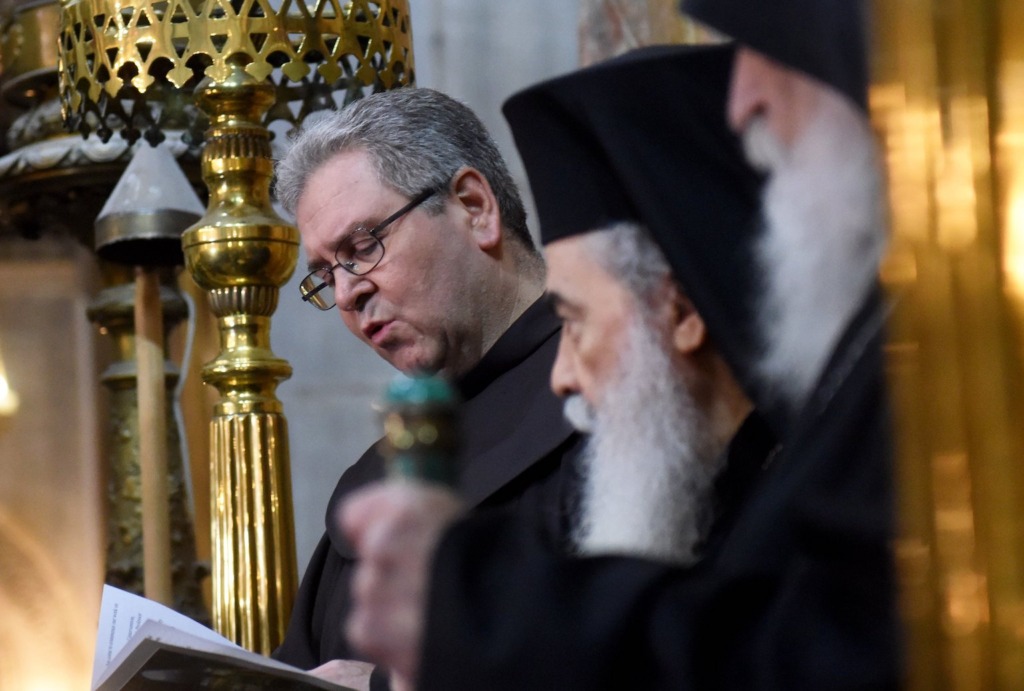JERUSALEM – As restoration and conservation work began on the pavement stones of the Church of the Holy Sepulcher, Franciscan Father Francesco Patton, custos of the Holy Land, said he hoped the cooperation among the three custodial churches in the project would serve as an example for all Christian churches and communities.
“There is always great significance beyond the material (aspect),” Father Patton said March 14 at a joint inaugural stone-lifting ceremony at the church. “We are looking at something worse than the pandemic now, with a war between two Christian countries, so our cooperation here acquires greater significance, and I hope we can show how important cooperation is.”
The start of this second phase of restoration work in the church is very important, he said, following the restoration of the Edicule, revered as the tomb of Jesus, in 2016-2017. That project was directed by the Greek Orthodox Patriarchate and conducted by an interdisciplinary team from the National Technical University of Athens.
An October agreement between the Franciscan Custody of the Holy Land, the Greek Orthodox Patriarchate and the Armenian Orthodox Patriarchate entrusted the Custody of the Holy Land with undertaking the current pavement restoration project. The three churches are the historical custodians of the church according to the 1852 Status Quo agreement that regulates the ownership of spaces in various holy sites.
“We hope the whole world will be able to see and understand that this has been done in understanding and mutual cooperation and love,” said Greek Orthodox Patriarch Theophilos III of Jerusalem.
Following an in-depth study in 2019, the project was delayed because of the outbreak of the COVID-19 pandemic.
The two-year restoration project will take place in stages while allowing for religious celebrations, pilgrimages and tourists. In addition to the restoration – and, when necessary, replacement of pavement stones – the project will also include any work needed to maintain the safety and stability of the Edicule, and the updating of electrical, water, mechanical and special fire prevention systems.
“I think we all have to face a lot of history, we have to manage this and translate the history to modern day and make it functional,” said Daniela Russo, who will be leading the restoration team from the La Venaria Reale Conservation and Restoration Center of Turin, Italy. “We have to try to conserve the history as well as renew all the apparatus while maintaining the Status Quo. We all have to work together.”
The size and weight of the stones slabs also present a challenge, she said.
Francesca Romana Stasolla, professor of Christian and medieval archaeology at Sapienza University in Rome, will lead the archaeological excavations, which will be conducted for the first time during the project. Stasolla said the multicolored pavement stones range in age from the third century to modern times.
The current church building dates back mainly to the Crusader era and was consecrated in 1142. It was built on the remains of the Roman temple built by Emperor Hadrian in 136 and of the church built by Roman Emperor Constantine in 335.
“This is a very important historical work,” said Stasolla. “We will have to work day by day and see what we uncover.”

